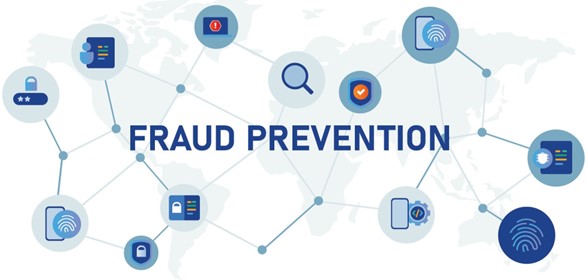News You Can Use – Summer Edition

Washington Update: Fiduciary Rule
In April 2024, the Department of Labor (DOL) finalized a new definition of who qualifies as an investment advice fiduciary and what those individuals must do in order to receive a fee for providing that investment advice. While these rules primarily impact investment advisors, there are several actions that plan sponsors should take.
What Changed?
The new rule expands the services that could result in someone being an investment advice professional. Notably, the expanded list of covered services includes not only “traditional” types of investment advice (such as recommending particular securities or an investment strategy), but now also includes making recommendations regarding:
- Advisability of rolling over, transferring, or distributing assets from a plan or IRA, including:
- Whether to engage in the transaction,
- The amount, the form, and the destination of such a rollover, transfer, or distribution.
How plan assets should be invested after a distribution.
- Advice on selection of other persons to provide investment advice or investment management services to the plan or investor.
A person who provides a covered service for a fee will be an investment advice fiduciary if they either (a) regularly provide professional investment advice and the recommendation is sufficiently individualized or (b) they represent they are a fiduciary.
A person’s fiduciary status is important because fiduciaries have certain obligations to participants and are prohibited from receiving a fee from plan assets unless certain requirements are satisfied. The DOL has also updated these requirements.
What Should I Do as the Plan Sponsor?
Generally, the plan’s investment advisors and managers will be most heavily impacted by the DOL’s new rule because they will need to update their practices and procedures to comply. However, plan sponsors should consider taking two actions:
-
Educate HR Employees.
Generally, the employees of a plan sponsor will not be investment advice fiduciaries either because they do not make recommendations (even about distributions), any recommendations are not made under the required context, and/or there is no fee or other compensation associated with covered recommendations.
However, this does not mean that it is impossible for an HR or other employee to meet the requirements, particularly if the plan sponsor employs financial counselors for its employees or investment professionals. One clear way to avoid fiduciary status is to avoid making any covered recommendations.
Therefore, plan sponsors may wish to ensure employees stay well clear of any potential fiduciary status by training HR employees to avoid conduct that would be seen as a recommendation particularly when attempting to educate employees about their distribution or investment options.
-
Identify Investment Advice Fiduciaries to Ensure Compliance.
Plan sponsors also should ensure they are aware of the fiduciary status of all service providers. If a plan sponsor directs payment to someone who is a fiduciary and who doesn’t comply with the DOL’s rules, the plan sponsor could be liable for engaging in a prohibited transaction. Thus, the plan sponsor should consider:
- identifying which of its service providers provide a covered service,
- asking that provider about their plan to comply with the new rule, and
- asking existing fiduciaries whether the rule will change how they interact with the committee.
The fiduciary rule is complex, but plan sponsors can take these simple steps to help keep their plans in compliance.
Best Practices: Preventing Plan Theft
Plan theft is a perennial hot-button issue in the benefit plan arena. This is for good reason. Defined contribution plans alone hold over $6 trillion for more than 100 million participants. This makes plans a target for thieves — for example, thieves may steal a participant’s identity and submit a request for a distribution. When the participant discovers the missing funds (sometimes years later), they often turn to the plan sponsor looking to be made whole (such as in the highly publicized Estée Lauder case).
The Department of Labor has confirmed that mitigating cybersecurity risk is a fiduciary duty, and specifically notes that plan fiduciaries should understand and guard against identity theft.
Here are some questions to ask yourself when evaluating your internal processes to combat the risk of plan theft:
- Does our cybersecurity program apply to our retirement plan as well as the company more generally?
- Who is in charge of approving distributions and loans? How do they ensure the person requesting the distribution or loan is the actual participant or beneficiary?
- Are employees trained not only on general cybersecurity practices for the organization but also the methods used to target our retirement plan assets?
- Are all changes to employee data (such as changed address, marriage/divorce, etc.) passed along to the plan’s TPA or recordkeeper?
- How are address changes verified? Is there extra verification when a change is made close in time to a loan or distribution request?
- Are prudent processes in place to mitigate identity theft and cybersecurity incidents? What do password requirements look like? Is multifactor authentication required?
- Do all employees know what steps to take if they suspect theft or another cybersecurity incident has occurred with respect to our plan?
Knowledgeable service providers take cybersecurity and identity theft very seriously and can help protect a plan’s assets. Your TPA partner can support your discussion and evaluation of practical steps you can take today to reduce the risk of plan theft. Please reach out!

Hot Topic: Highlight on IRS Proposed Forfeiture Regulations
There has been a lot of attention recently on how forfeitures are used in retirement plans. In February of last year, the IRS released proposed regulations governing the use of plan forfeitures. This was followed by several lawsuits alleging that forfeitures could not be used to reduce future employer contributions in certain cases.
IRS Guidance:
The proposed regulations build on prior guidance from IRS on when defined contribution plans, including 401(k) plans, should use any plan forfeitures. The proposed regulations require that forfeitures in defined contributions plans be allocated or otherwise used within twelve months following the end of the plan year in which the forfeiture occurred. The proposed regulations also explicitly provide that plans may use forfeitures to: (1) pay plan administrative expenses, (2) reduce employer contributions, or (3) increase benefits in other participants’ accounts (in accordance with plan terms), and the plan document must reflect how the plan will use forfeitures.
These proposed regulations are not significantly different from what the IRS has been saying in informal guidance for many years. However, the proposed regulations do provide relief from prior unused forfeitures. If a plan has any unused forfeitures for a year prior to the 2024 plan year, then those will be treated as having been incurred in the first plan year that begins in 2024. And therefore, they must be used no later than the end of the 2025 plan year.
Lawsuits:
Unrelated to the regulations, but coincidentally close in time, about a dozen lawsuits were filed in California against national employers alleging that they were improperly using plan forfeitures to reduce employer contributions to their plans. The facts vary, but in general, the issue boils down to whether a common plan provision — allowing forfeitures to be used, in the administrator’s discretion, to (1) pay plan administrative expenses, (2) reduce employer contributions, or (3) increase benefits. The discretion element of this provision is what the plaintiffs are arguing is problematic — that if the administrator has discretion, they must exercise that discretion to benefit participants, and reducing employer contributions benefits the employer rather than participants and therefore is a fiduciary breach. These cases have not been uniformly resolved — some cases have been dismissed, some have not, and some haven’t had any action. These suits have raised concerns across the industry about how plan sponsors should respond.
Action:
The IRS guidance and the lawsuits may feel a bit at odds with each other, but they can coexist. There are two actions to consider:
- To comply with IRS guidance, plan sponsors should ensure that a process is in place to review and use forfeitures as part of the year-end compliance process. If forfeitures were allowed to accumulate previously, these accounts may be large, and sponsors should develop and implement an intentional strategy ASAP to ensure the forfeitures are fully used by the end of the transition period.
- Plan sponsors may also consider responding to the lawsuits by amending the plan to provide an order of how forfeitures will be used so that the administrator does not have discretion.
Your TPA partner can assist in developing a compliant process to review and address these issues related to forfeitures in your retirement plan.


Kelsey Mayo, Partner, Poyner Spruill
Kelsey’s practice is focused in the areas of Employee Benefits and Executive Compensation. She works with business owners and HR executives to understand and manage employee benefits and executive compensation arrangements. She routinely represents clients before the Internal Revenue Service, Department of Labor, and Pension Benefit Guar- antee Corporation and has extensive experience in virtually all aspects of employee benefit plans and executive com- pensation arrangements.